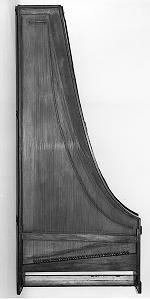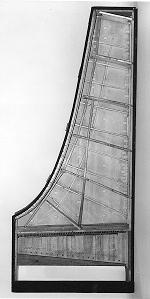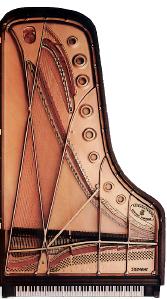
 Fig. 14 (left) Plan view of 1720 Cristofori (By permission of the Metropolitan Museum of Art).
Fig. 14 (left) Plan view of 1720 Cristofori (By permission of the Metropolitan Museum of Art).
Fig. 15 (right) Bottom of 1720 Cristofori (By permission of the Metropolitan Museum of Art).

[<- Previous] [Contents of this lecture] [Next ->]
Fig. 14 shows the top of the soundboard of the 1720 Cristofori piano. The original soundboard was made of cypress wood, 3.5 mm thick, which may have come from Crete (Pollins 1984). The original soundboard was replaced in 1938 with what is said to be an accurate copy. The bottom of the soundboard can be seen in Fig. 15. In contrast, Fig. 16 shows a contemporary concert grand. Note that much of the contemporary soundboard is covered by the cast iron string plate. The soundboards of modern pianos usually range in thickness between 6.5 and 9.5 mm approximately. In the U.S.A., spruce, and particularly Sitka spruce, has been the favored soundboard material for high quality pianos.

 Fig. 14 (left) Plan view of 1720 Cristofori (By permission of the Metropolitan Museum of Art).
Fig. 14 (left) Plan view of 1720 Cristofori (By permission of the Metropolitan Museum of Art).
Fig. 15 (right) Bottom of 1720 Cristofori (By permission of the Metropolitan Museum of Art).
 Fig. 16. Plan view of contemporary concert grand.
Fig. 16. Plan view of contemporary concert grand.
[<- Previous] [Top] [Contents of this lecture] [Next ->]
This lecture is one of Five lectures on the Acoustics of the piano
© 1990 Royal Swedish Academy of Music